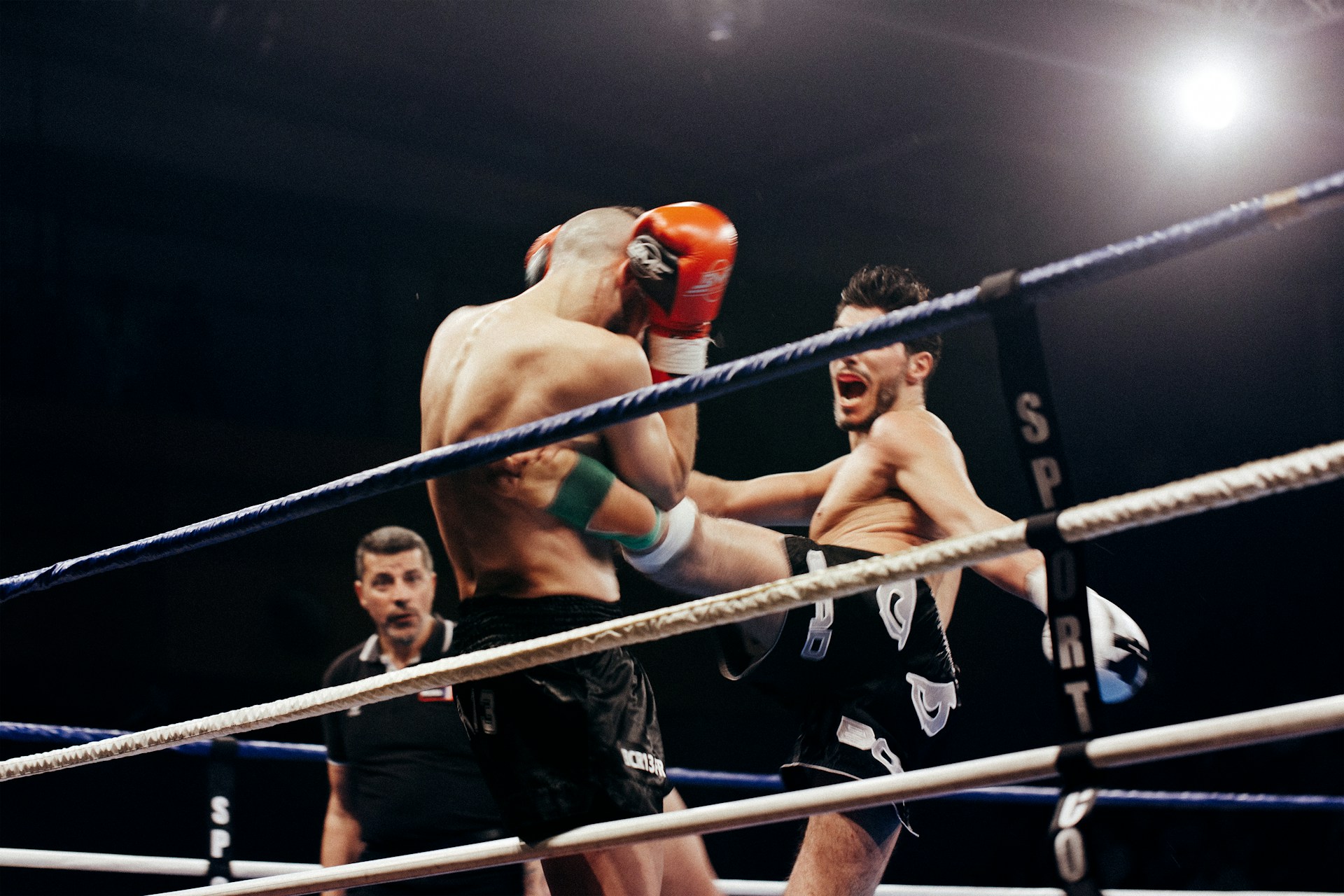High-level sports performance, especially in combat sports such as kickboxing, requires a unique blend of physical power, technical finesse, and mental acuity. The science of sports training has evolved considerably over the years, providing athletes with a wealth of knowledge and tools to enhance their performance. Among the key elements of this training is bout pacing, a deliberate strategy adopted by athletes to manage their energy levels and increase their chances of winning a fight. This article delves into the strategies used by UK kickboxers to optimize their bout pacing.
The Science of Bout Pacing in Kickboxing
Understanding bout pacing in kickboxing requires a deep dive into the sport’s unique demands. Unlike other sports, a boxing or kickboxing match is divided into rounds, typically lasting three minutes each with a one-minute rest period in between. This structure necessitates a strategy to manage energy expenditure and recovery, giving birth to the concept of bout pacing.
Avez-vous vu cela : What role does vision training play in the performance of UK fencing athletes?
Bout pacing in the context of kickboxing is the strategic distribution of effort across the fight duration. It’s about conserving energy during noncritical phases and amplifying effort when opportunities to score or knock out an opponent arise. The science behind this strategy lies in understanding the body’s energy systems and the physiological demands of a kickboxing match.
Kickboxing, like other combat sports, demands both aerobic and anaerobic fitness. The aerobic system provides a steady supply of energy over the duration of the match, while the anaerobic system is responsible for short, intense bursts of power during attacks or defensive maneuvers. A well-planned bout pacing strategy will balance the use of these two systems, maintaining a high, but sustainable, level of output throughout the match.
Cela peut vous intéresser : How can UK combat sports athletes manage chronic pain without relying on medication?
Training Strategies for Effective Bout Pacing
Training is an essential component of bout pacing in kickboxing. The effectiveness of a fighter’s bout pacing strategy will largely depend on their physical conditioning. Here is where the strength and conditioning coach plays a pivotal role.
High-intensity interval training (HIIT) is a common tool in a kickboxer’s training arsenal. This form of training involves alternating between periods of high-intensity exercise and periods of low-intensity recovery. HIIT is effective for improving both aerobic and anaerobic capacity, making it an ideal training method for kickboxers.
Another training strategy is sport-specific training, which involves exercises that mimic the movements and intensity of a kickboxing bout. These exercises not only improve physical conditioning but also enhance technical skills and tactical awareness.
Strength training is also crucial for kickboxers. It helps to increase power output, improve muscular endurance, and reduce the risk of injury. Strength training for kickboxers often involves functional exercises that target the muscle groups most used in the sport.
The Role of Mental Preparation in Bout Pacing
While physical conditioning is important, a fighter’s mental state can also significantly influence their bout pacing. Mental skills such as focus, emotional control, and decision-making can all impact how well a fighter manages their effort during a match.
Kickboxers often use psychological techniques such as visualization and mindfulness to enhance their mental skills. Visualization involves mentally rehearsing a fight, allowing fighters to plan their pacing strategy and anticipate possible scenarios. Mindfulness, on the other hand, helps fighters stay present during the fight, enabling them to adapt their pacing strategy as the fight progresses.
Personalizing Bout Pacing Strategies
The best bout pacing strategy is one that’s tailored to the individual athlete. Personal factors such as fitness level, fighting style, and opponent’s strategy all need to be considered when devising a bout pacing plan.
Kickboxers with a high level of aerobic fitness, for example, might adopt a steady pace throughout the match, maintaining a high work rate to wear down their opponent. On the other hand, kickboxers with exceptional anaerobic capacity might prefer a more explosive style, conserving their energy for powerful attacks.
It’s also important to adapt the pacing strategy according to the opponent’s tactics. If the opponent tends to start aggressively, for example, it might be worth conserving energy in the early rounds and increasing the pace in the later stages when the opponent is likely to fatigue.
In conclusion, bout pacing in kickboxing is a complex, multifaceted strategy that requires a sound understanding of sports science, effective training, and mental preparation. By taking a personalized approach, UK kickboxers can devise a bout pacing strategy that maximizes their strengths and gives them the edge in the ring.
Psychological Techniques and Resources for Bout Pacing
Psychological preparation can significantly influence a kickboxer’s bout pacing strategy. Having strong mental skills such as focus, emotional control, and decision-making can be as important as physical fitness in the ring. This section will delve into some of the mental techniques and resources that UK kickboxers use to optimize their bout pacing.
Many kickboxers turn to resources such as Google Scholar, Crossref Google, and PubMed Crossref to access the latest research in sports science and mental training. By keeping up to date with the most recent studies, athletes can apply cutting-edge psychological techniques to their training regimes.
One of these techniques is visualization, a mental exercise that involves imagining a fight scenario and strategically planning the pacing strategy. Visualization can help fighters anticipate different scenarios, preparing them to adjust their energy management strategies accordingly.
Mindfulness is another technique often used by kickboxers. It involves being fully present and aware during the fight, enabling the fighter to respond effectively to their opponent’s tactics. Practicing mindfulness can help athletes maintain focus and avoid entering the ‘red zone’—a state of maximal exertion that can lead to early fatigue.
Google Scholar and PubMed Crossref are particularly useful for finding studies that explore the impact of mental skills on combat sports performance. They provide free content that covers a range of topics from the influence of mental skills training on heart rate variability to the use of mindfulness in boxing and MMA.
Incorporating Sports Science in Bout Pacing Strategies
Sports science is a crucial aspect of bout pacing in kickboxing. This interdisciplinary field combines knowledge from areas like physiology, psychology, and biomechanics to understand and enhance sports performance. By incorporating sports science into their training regimes, UK kickboxers can optimize their bout pacing strategies.
One area of sports science that’s particularly relevant to bout pacing is the study of the body’s energy systems. As previously mentioned, kickboxing requires a balance between aerobic and anaerobic fitness. Aerobic capacity relates to the body’s ability to sustain prolonged, low-intensity activity, while anaerobic capacity refers to the body’s ability to perform short, high-intensity bursts of effort.
Training methods designed to improve these capacities can significantly impact a fighter’s bout pacing strategy. High-intensity interval training (HIIT), for example, can be used to enhance both aerobic and anaerobic fitness. This method involves alternating between periods of intense exercise (‘effort sprints’) and periods of lower-intensity activity or rest.
Another area of sports science that can influence bout pacing is strength and conditioning. Strength conditioning can help kickboxers increase their power output and muscular endurance, enabling them to maintain a high, but sustainable, level of output throughout the match. Martial arts focused strength conditioning often involves functional exercises tailored to the specific demands of the sport.
In essence, sports science provides kickboxers with the tools to develop a personalized and effective bout pacing strategy. By applying scientific principles to their training, they can maximize their physical and mental performance in the ring.
Conclusion
Bout pacing in kickboxing is a multifaceted strategy, incorporating physical training, mental preparation, and sports science principles. UK kickboxers use a variety of techniques—from high-intensity training and strength conditioning to mental skills training and sports science research—to optimize their bout pacing.
By personalizing their strategies, these athletes can maximize their strengths, adapt to their opponent’s tactics, and ideally, gain an advantage in the ring. Whether they choose a steady, aerobic-based approach or a more explosive, anaerobic one, the key to effective bout pacing lies in balance, adaptability, and a sound understanding of the science behind it.
The world of kickboxing continues to evolve, with new theories and training methods emerging regularly. As science and technology advance, there’s no doubt that the strategies used to optimize bout pacing will continue to evolve, aiming for that perfect balance of power, finesse, and endurance in the ring.










